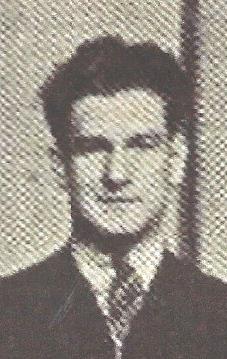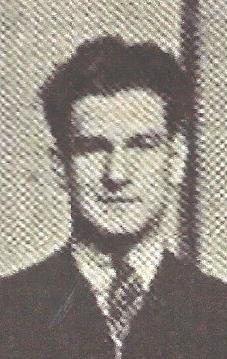Eldest son of Felix and Catherine Apicella
He was an architect like his brother Rick
Brothers:
Anthony Apicella
Rick (Acell)
F. Michael
Ramo
Sister:
Yolanda (Apicella) Moak
Carl Apicella was a World War II veteran who served in the so-called Ghost Army, which was so secretive that its activities--deceiving and distracting the German Army--were not declassified and made public not until 1996, seven years after Carl's death. But the unit's mission--which saved the lives of an estimated 10,000 - 30,000 American soldiers and helped win the war--was finally, officially recognized by the U.S. government.
On March 21, 2024, three (3) Ghost Army survivors--and a few relatives representing some of the 1,100 men who had served in the unit--were honored at The Capitol in Washington, D.C. where they awarded Congressional Gold Medals.
Below is a biography of Carl posted on the website of the Ghost Army Legacy Project:
https://ghostarmy.org/roster/Carl-Apicella/
603rd Engineer Camouflage Bn : 603rd HQ Company
ASN#35921496
Born 1917 in OH, Died 1989
Artist
County of residence at enlistment: Cuyahoga County, OH
Other residence(s): Cleveland, OH; South Euclid, OH; Cleveland Heights, OH
United States Army, European Theatre of Operations
Occupation before the war: Engineers, Civil
College education before the war: Case Western Reserve Univ., Cleveland State Univ.
Notes: Earlier in Company D?
Source: Photo caption in Seymour Nussenbaum scrapbook; notes provided by family of Harold Dahl; photo from Find a Grave website, added y Richard Weide
Carl Apicella was born on July 8, 1917* in Cleveland, OH, the oldest of five children. His father worked as a cement contractor.
Carl studied architecture and art at John Huntington Polytechnic Institute, the Cooper School of Art, Case School of Applied Science (eventually Case Western Reserve University), and Fenn College (which later became Cleveland State University), the last for four years. He was usually enrolled in night classes, and his education was interrupted by his World War II service.
He registered for the draft on October 16, 1940, giving his employer as C.T. Apicella & Associates and his wife's name as Margaret, and he enlisted on November 12, 1943. Like many artists, he was assigned to the 603rd Engineer Camouflage Battalion, and saw service in Europe during the war. He was one of the artists who worked on the set design for "Blarney Breakdown," a show the unit put on at the end of October, 1944.
He was discharged from the Army on October 30, 1945 and returned to Cleveland, where he worked as a commercial and residential architect. His firm became known as Carl T. Apicella Organization, and also the Apicella Builders Clinic Organization, and it included his younger brother Rick Acell, also an architect. (Rick had changed his last name along the way.)
On June 26, 1947, he married Helen Valince; they would have one daughter, Carla Jean, the following year. By 1950, the family was living in South Euclid, OH.
In 1954, Carl received top prize in a local competition for a split-level home he designed and built. And in 1956 he won the regional award in a national competition sponsored by the Minneapolis-Honeywell Regulator Co. for outstanding home construction.
Carl and Rick's father also helped with his sons' business, which included both design and construction. In fact, their father died in 1955 when he was in Florida, supervising the construction of a home designed by the Apicella firm.
In Ohio, Carl and his firm built houses and apartments in East Cleveland, Cleveland Heights, Lyndhurst, Shaker Heights, and Cleveland. He also designed structures such as an outdoor shrine for St. Paul Catholic Church in Euclid. He served as a member of the South Euclid Planning and Zoning Board in the late 1950s.
In 1965, he was partially blinded by a nail and left off design and building. He then spent 12 years working for the Cleveland Heights Building Department, serving for part of that time as the city's building commissioner.
After that, he worked as chief of construction for the Cuyahoga Metropolitan Housing Authority, and then as building commissioner in Highland Heights, OH from 1982-84.
He also was "Mr. Fixit" on radio station WBBG, and an instructor for the Cleveland Heights-University Heights Board of Education, teaching adult courses in home maintenance. He was a member of the Cleveland Area Board of Realtors and was certified with the state as an electrical safety and plumbing inspector.
Carl and Helen divorced in 1971, and he then married Donna Melaragno. They would go on to have two sons: Eugene and Thomas.
Carl was living in Cleveland Heights when he died of cancer on June 6, 1989. He is buried at Calvary Cemetery in Cleveland, OH.
*Various documents list his birthdate as 1915, 1917, 1919, 1920, and 1921. Given various census records and other sources, 1917 seems the most likely.
Eldest son of Felix and Catherine Apicella
He was an architect like his brother Rick
Brothers:
Anthony Apicella
Rick (Acell)
F. Michael
Ramo
Sister:
Yolanda (Apicella) Moak
Carl Apicella was a World War II veteran who served in the so-called Ghost Army, which was so secretive that its activities--deceiving and distracting the German Army--were not declassified and made public not until 1996, seven years after Carl's death. But the unit's mission--which saved the lives of an estimated 10,000 - 30,000 American soldiers and helped win the war--was finally, officially recognized by the U.S. government.
On March 21, 2024, three (3) Ghost Army survivors--and a few relatives representing some of the 1,100 men who had served in the unit--were honored at The Capitol in Washington, D.C. where they awarded Congressional Gold Medals.
Below is a biography of Carl posted on the website of the Ghost Army Legacy Project:
https://ghostarmy.org/roster/Carl-Apicella/
603rd Engineer Camouflage Bn : 603rd HQ Company
ASN#35921496
Born 1917 in OH, Died 1989
Artist
County of residence at enlistment: Cuyahoga County, OH
Other residence(s): Cleveland, OH; South Euclid, OH; Cleveland Heights, OH
United States Army, European Theatre of Operations
Occupation before the war: Engineers, Civil
College education before the war: Case Western Reserve Univ., Cleveland State Univ.
Notes: Earlier in Company D?
Source: Photo caption in Seymour Nussenbaum scrapbook; notes provided by family of Harold Dahl; photo from Find a Grave website, added y Richard Weide
Carl Apicella was born on July 8, 1917* in Cleveland, OH, the oldest of five children. His father worked as a cement contractor.
Carl studied architecture and art at John Huntington Polytechnic Institute, the Cooper School of Art, Case School of Applied Science (eventually Case Western Reserve University), and Fenn College (which later became Cleveland State University), the last for four years. He was usually enrolled in night classes, and his education was interrupted by his World War II service.
He registered for the draft on October 16, 1940, giving his employer as C.T. Apicella & Associates and his wife's name as Margaret, and he enlisted on November 12, 1943. Like many artists, he was assigned to the 603rd Engineer Camouflage Battalion, and saw service in Europe during the war. He was one of the artists who worked on the set design for "Blarney Breakdown," a show the unit put on at the end of October, 1944.
He was discharged from the Army on October 30, 1945 and returned to Cleveland, where he worked as a commercial and residential architect. His firm became known as Carl T. Apicella Organization, and also the Apicella Builders Clinic Organization, and it included his younger brother Rick Acell, also an architect. (Rick had changed his last name along the way.)
On June 26, 1947, he married Helen Valince; they would have one daughter, Carla Jean, the following year. By 1950, the family was living in South Euclid, OH.
In 1954, Carl received top prize in a local competition for a split-level home he designed and built. And in 1956 he won the regional award in a national competition sponsored by the Minneapolis-Honeywell Regulator Co. for outstanding home construction.
Carl and Rick's father also helped with his sons' business, which included both design and construction. In fact, their father died in 1955 when he was in Florida, supervising the construction of a home designed by the Apicella firm.
In Ohio, Carl and his firm built houses and apartments in East Cleveland, Cleveland Heights, Lyndhurst, Shaker Heights, and Cleveland. He also designed structures such as an outdoor shrine for St. Paul Catholic Church in Euclid. He served as a member of the South Euclid Planning and Zoning Board in the late 1950s.
In 1965, he was partially blinded by a nail and left off design and building. He then spent 12 years working for the Cleveland Heights Building Department, serving for part of that time as the city's building commissioner.
After that, he worked as chief of construction for the Cuyahoga Metropolitan Housing Authority, and then as building commissioner in Highland Heights, OH from 1982-84.
He also was "Mr. Fixit" on radio station WBBG, and an instructor for the Cleveland Heights-University Heights Board of Education, teaching adult courses in home maintenance. He was a member of the Cleveland Area Board of Realtors and was certified with the state as an electrical safety and plumbing inspector.
Carl and Helen divorced in 1971, and he then married Donna Melaragno. They would go on to have two sons: Eugene and Thomas.
Carl was living in Cleveland Heights when he died of cancer on June 6, 1989. He is buried at Calvary Cemetery in Cleveland, OH.
*Various documents list his birthdate as 1915, 1917, 1919, 1920, and 1921. Given various census records and other sources, 1917 seems the most likely.
Family Members
Sponsored by Ancestry
Advertisement
Advertisement






